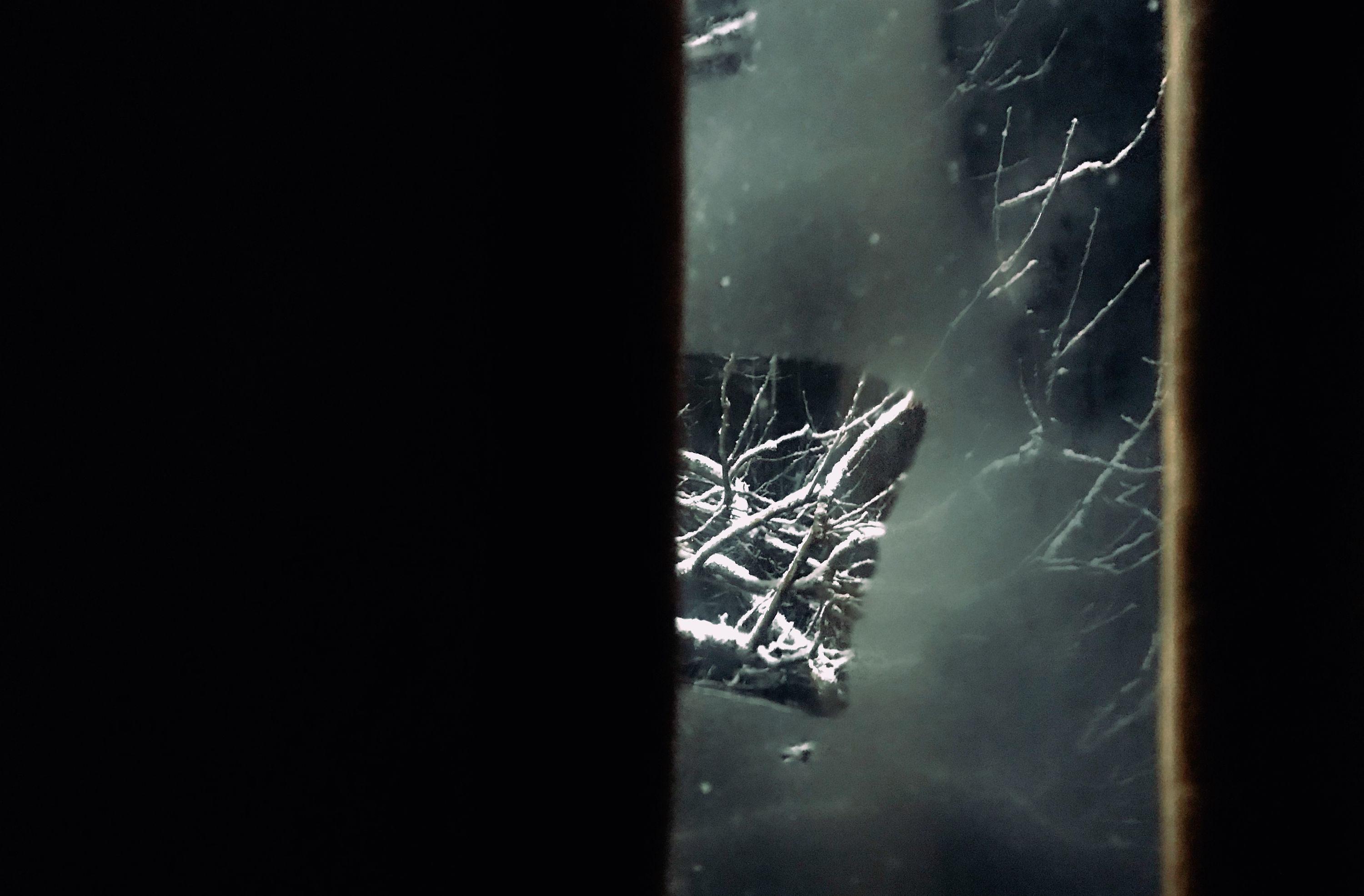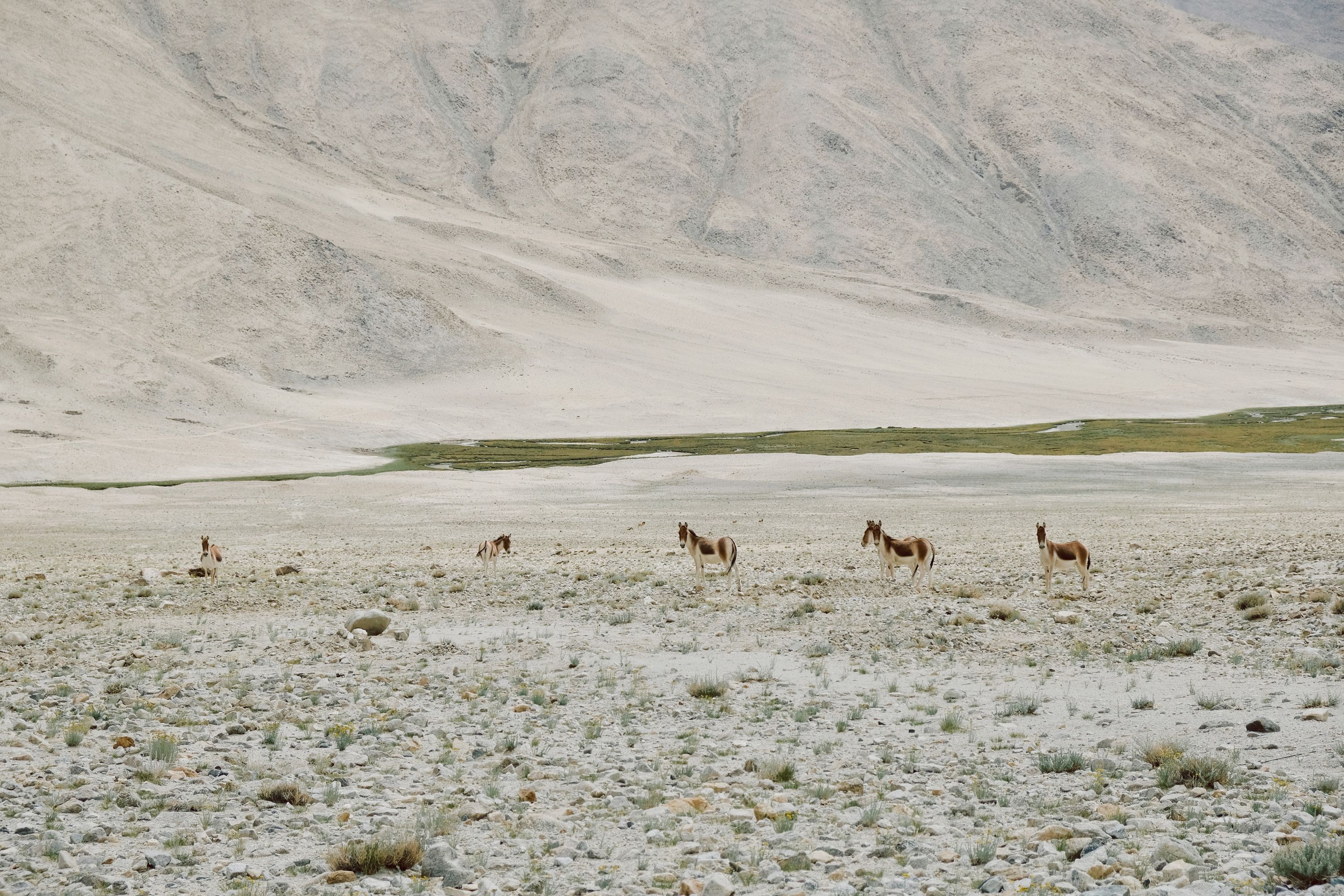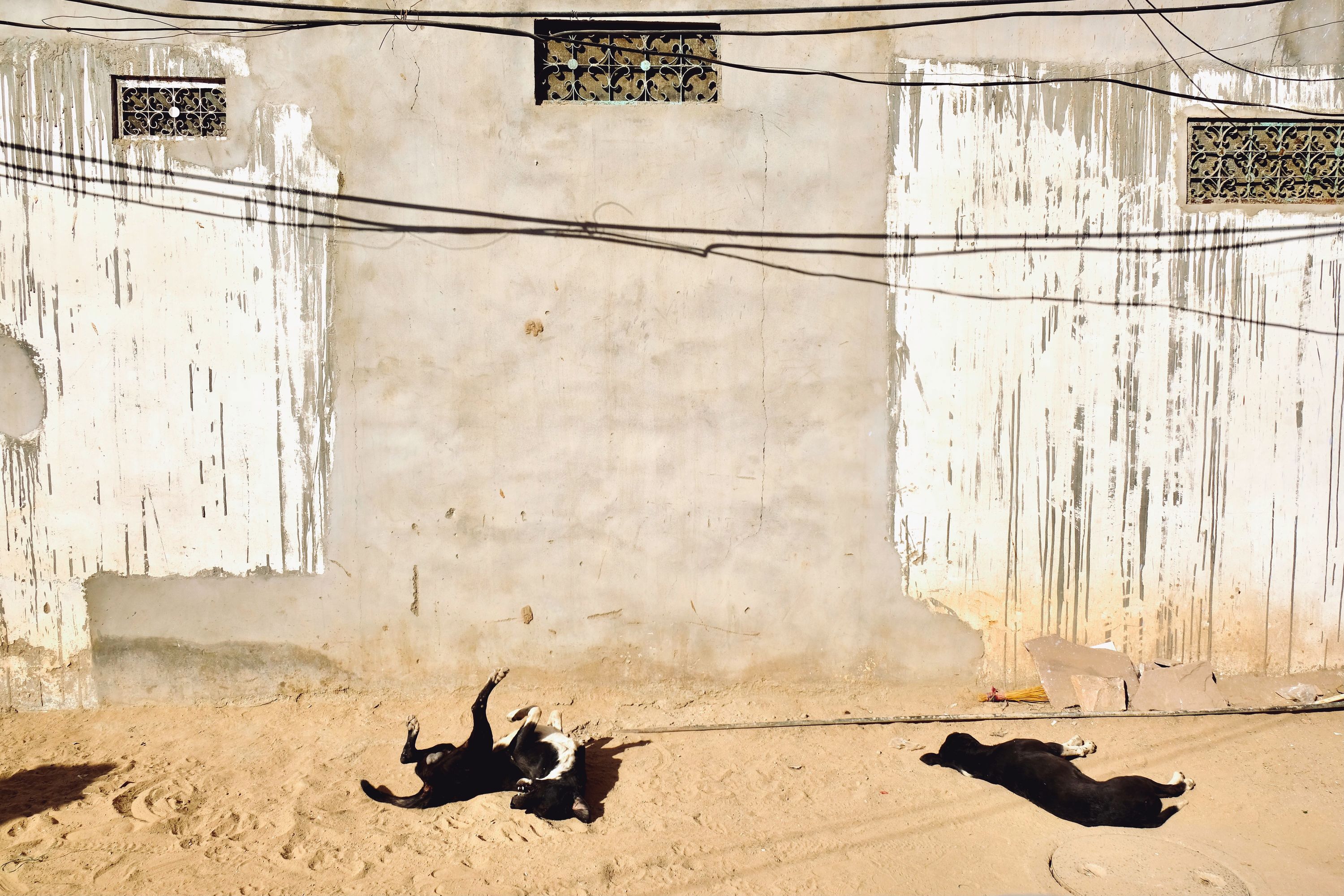How to look when it is starting to snow.
Do not look out directly when it is starting to snow, when it has just started to fall.
Do not make eye contact, do not make a sound. Only sneak occasional peeks from between the curtains of your large glass windows. With your hand, make a small peephole the size of your palm on the foggy window. Now look through it, quick glances like a thief. Look how softly it lands and gathers on the wet apple tree branches. Look at the white take over the night, branch by branch.
 Snowfall at night in Vashisht, Himachal Pradesh, India. January 2022. Taken w iPhone 7.
Snowfall at night in Vashisht, Himachal Pradesh, India. January 2022. Taken w iPhone 7.
When you have had a few looks, make sure that you are not sure of what you saw. You can’t believe you witnessed this other-worldly dance. Make sure you can’t believe your eyes or anyone else’s around you. In fact, pretend that it didn’t happen. Like when you see a silly crime on a Sunday afternoon and can’t be bothered.
This is how to look when it is starting to snow. So that it continues to snow. Because when it stops, it will be as if it didn’t happen. No amount of fallen snow will convince you of the last night: snow falling from the sky, endlessly for hours.
I bring Death into this world.
I bring Death into this world when I’m terribly sick. As when I was last week, for five days around January 22. Sickens me to my stomach how boring and lame it is to be sick. Nothing worse than to be alive but sick. I bring Death out of the sheer boredom of being sick.
So don’t get frightened when you see him around. He is for me, he is all mine.
Like you, I know nothing will ever happen to me. Like you, I know I will never die, go on living.
I bring him for comfort, I bring him for company. Sarcastic little bitch, he is funny as hell. He, the death of all that is living, is here to make my life a little interesting while I lie dead on my white bed.
I let him hover around in my pistachio room in the Himalaya. I let him make all the jokes, I let him roast me while the fever is burning my veins.
Until, that is, I’m ready to rise from the bed, life in my feet, and take a shower so good as if it’s my first shower. Until I step out of the bathroom, life in my feet, and kick him out of the room.
Frank Herbert on the one who terrifies.
Who terrifies this mediocre, mediocre world and its evil, mediocre elite overlords everywhere?
The person who takes the banal and ordinary and illuminates it in a new way can terrify. We do not want our ideas changed.
— Frank Herbert, Dune
Kiangs of Ladakh.
On December 17, 2020, when I started from my hometown Surat on the Xpluse 200, I had no idea that one day, exactly 267 days later, I would be interrupting these kiangs and their grazing in the plains of Ladakh on September 10, 2021.
—that I would briefly enter their life and they mine.
 Kiangs somewhere in Ladakh, India. September 2021.
Kiangs somewhere in Ladakh, India. September 2021.
While I cringe over small imperfections, vast planets and stars continue their dancing in the eternal dark.
Some like me like poetry.
I’m in the mood for poetry, so here is one by Wislawa Szymborska, one of the greatest poets ever. Her new and peculiar ways of seeing and thinking, precise truths and unflinching opinions, curious daydreaming and rhythmic orchestra of words and pauses, and her wonderful sense of humour. I admire her deeply.
Some Like Poetry — Wislawa Szymborska
Some—
thus not all. Not even the majority of all but the minority.
Not counting schools, where one has to,
and the poets themselves,
there might be two people per thousand.
Like—
but one also likes chicken soup with noodles,
one likes compliments and the color blue,
one likes an old scarf,
one likes having the upper hand,
one likes stroking a dog.
Poetry—
but what is poetry.
Many shaky answers
have been given to this question.
But I don’t know and don’t know and hold on to it
like to a sustaining railing.
Translated from the Polish by Regina Grol
Black dogs of a blue city.
 Street dogs enjoying the winter sun in Jodhpur, Rajasthan, India. December 2020.
Street dogs enjoying the winter sun in Jodhpur, Rajasthan, India. December 2020.
The sun lives in my left eye, and makes it twitch whenever the solar flares come shooting from its corona to mine.
What goes around comes around.
Earlier today. I was sitting in a chair next to flower plants shaken up by recent snow. Superb afternoon sun and cold breezes of the mountains.
A fluffy black insect climbed up on my chair and began loitering on my right arm. I usually don’t bother them but I did something this time and to this insect.
With my left index finger, I transported the insect that was on the plants — and had accidentally reached my arm through the chair, because I was sitting there — to a wall away from the plants.
And now the world has changed slightly. With a few more consequences to bear.